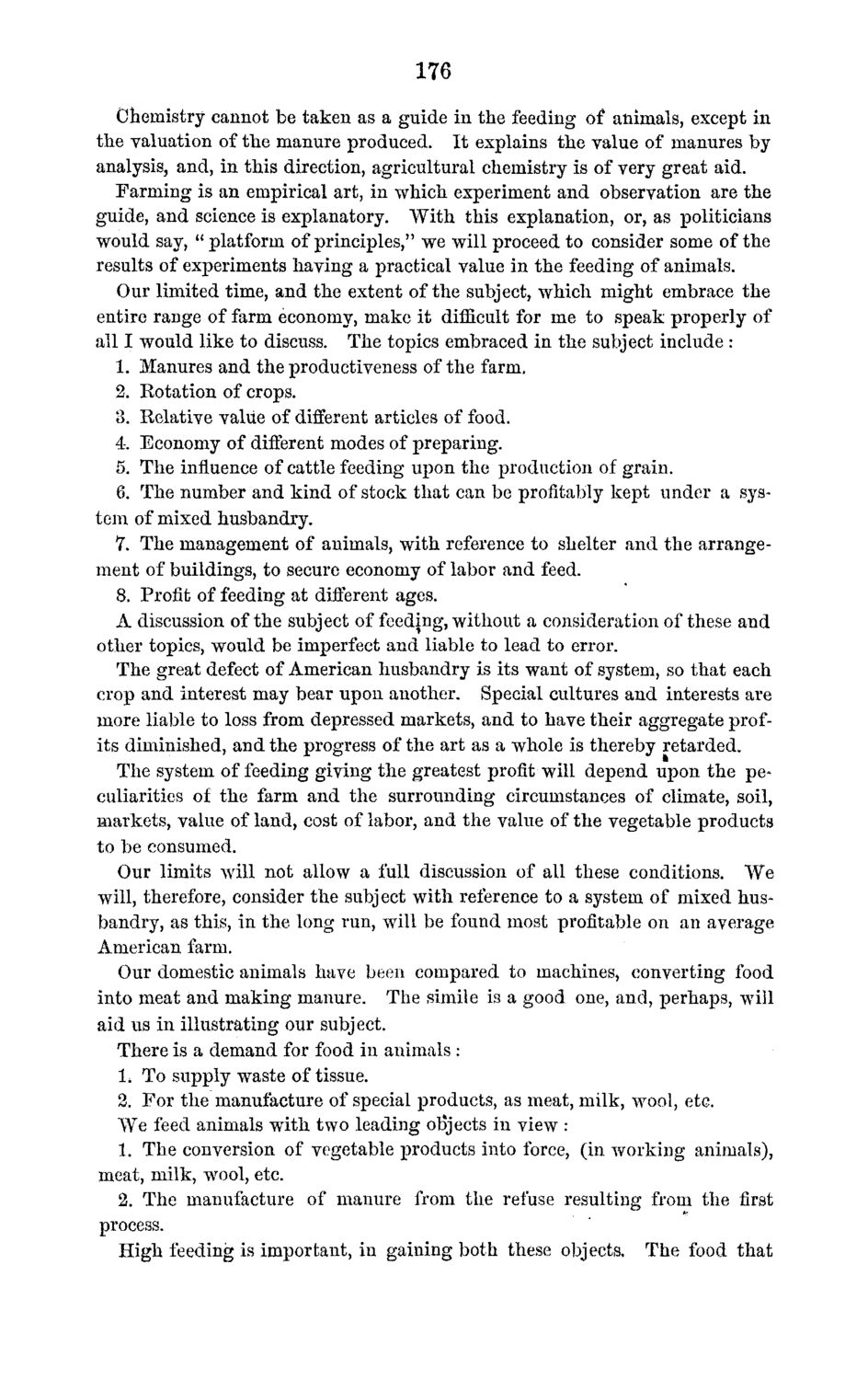| |
| |
Caption: Board of Trustees Minutes - 1870
This is a reduced-resolution page image for fast online browsing.

EXTRACTED TEXT FROM PAGE:
176 Chemistry cannot be taken as a guide in the feeding of animals, except in the valuation of the manure produced. It explains the value of manures by analysis, and, in this direction, agricultural chemistry is of very great aid. Farming is an empirical art, in which experiment and observation are the guide, and science is explanatory. With this explanation, or, as politicians would say, " platform of principles," we will proceed to consider some of the results of experiments having a practical value in the feeding of animals. Our limited time, and the extent of the subject, which might embrace the entire range of farm economy, make it difficult for me to speak properly of all I would like to discuss. The topics embraced in the subject include : 1. Manures and the productiveness of the farm. 2. Kotation of crops. 3. Relative value of different articles of food. 4. Economy of different modes of preparing. 5. The influence of cattle feeding upon the production of grain. 6. The number and kind of stock that can be profitably kept under a system of mixed husbandry. 7. The management of animals, with reference to shelter and the arrangement of buildings, to secure economy of labor and feed. 8. Profit of feeding at different ages. A discussion of the subject of feeding, without a consideration of these and other topics, would be imperfect and liable to lead to error. The great defect of American husbandry is its want of system, so that each crop and interest may bear upon another. Special cultures and interests are more liable to loss from depressed markets, and to have their aggregate profits diminished, and the progress of the art as a whole is thereby retarded. The system of feeding giving the greatest profit will depend upon the peculiarities of the farm and the surrounding circumstances of climate, soil, markets, value of land, cost of labor, and the value of the vegetable products to be consumed. Our limits will not allow a full discussion of all these conditions. We will, therefore, consider the subject with reference to a system of mixed husbandry, as this, in the long run, will be found most profitable on an average American farm. Our domestic animals have been compared to machines, converting food into meat and making manure. The simile is a good one, and, perhaps, will aid us in illustrating our subject. There is a demand for food in animals : 1. To supply waste of tissue. 2. For the manufacture of special products, as meat, milk, wool, etc. We feed animals with two leading objects in view : 1. The conversion of vegetable products into force, (in working animals), meat, milk, wool, etc. 2. The manufacture of manure from the refuse resulting from the first process. High feeding is important, in gaining both these objects, The food that
| |